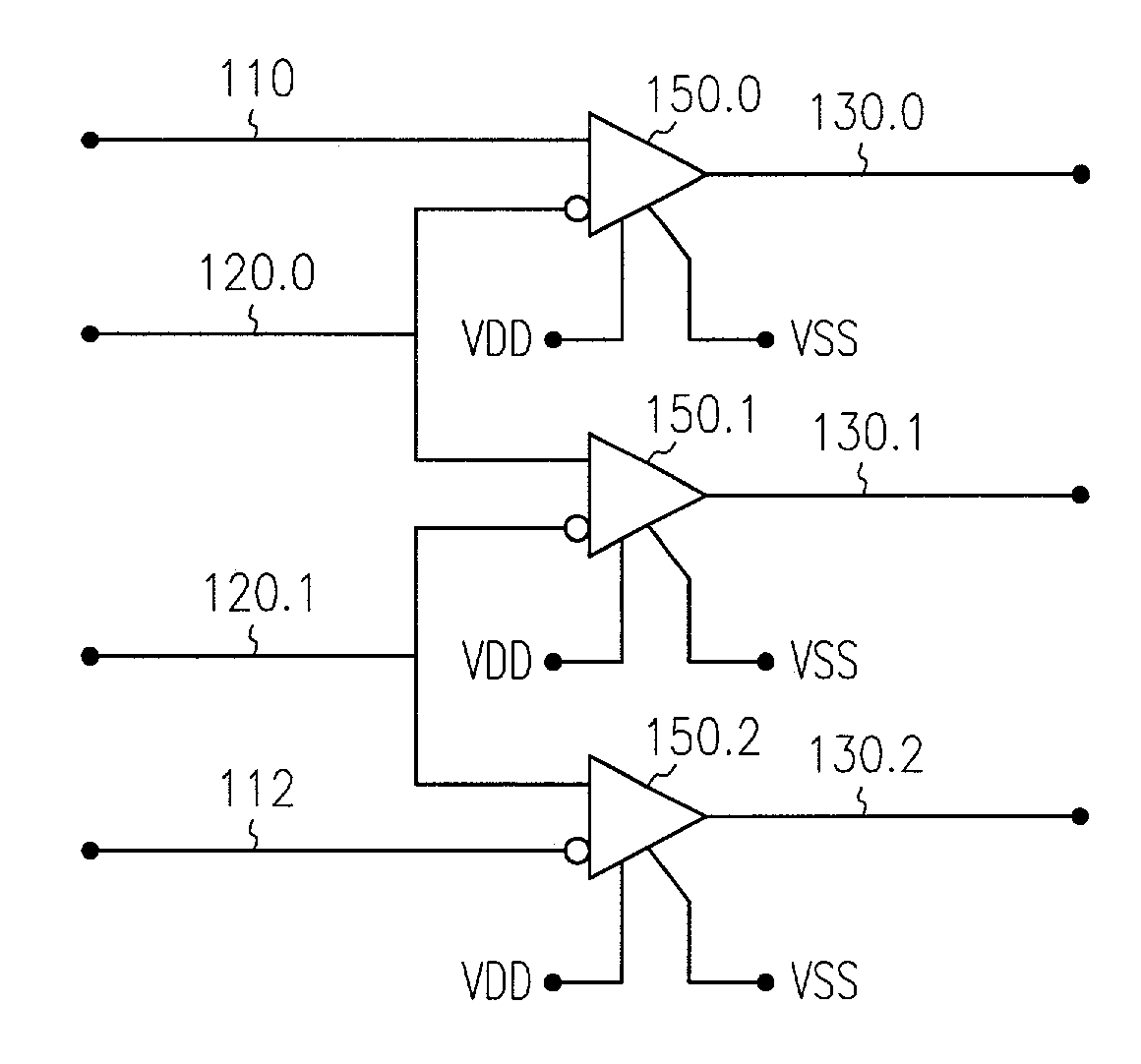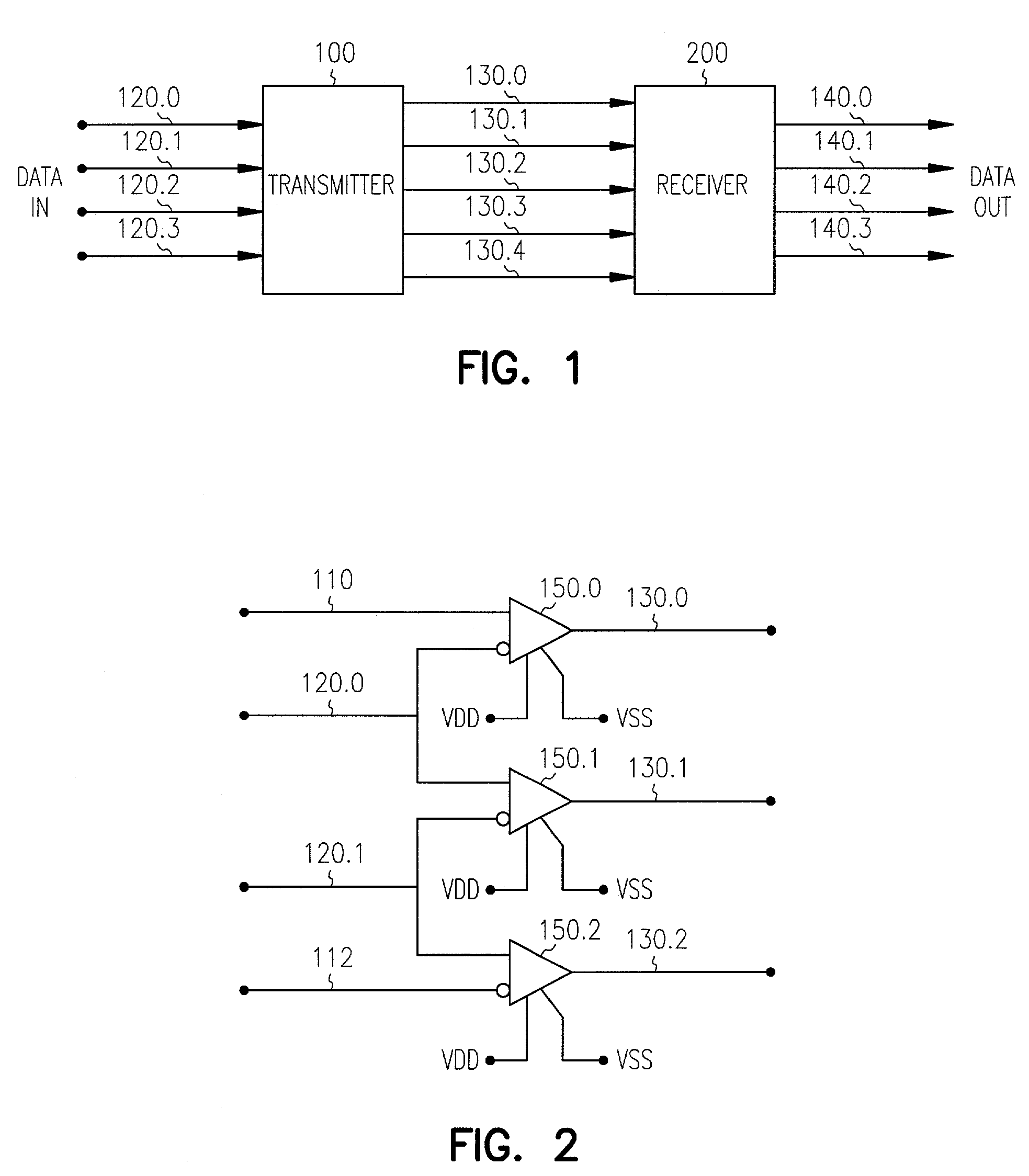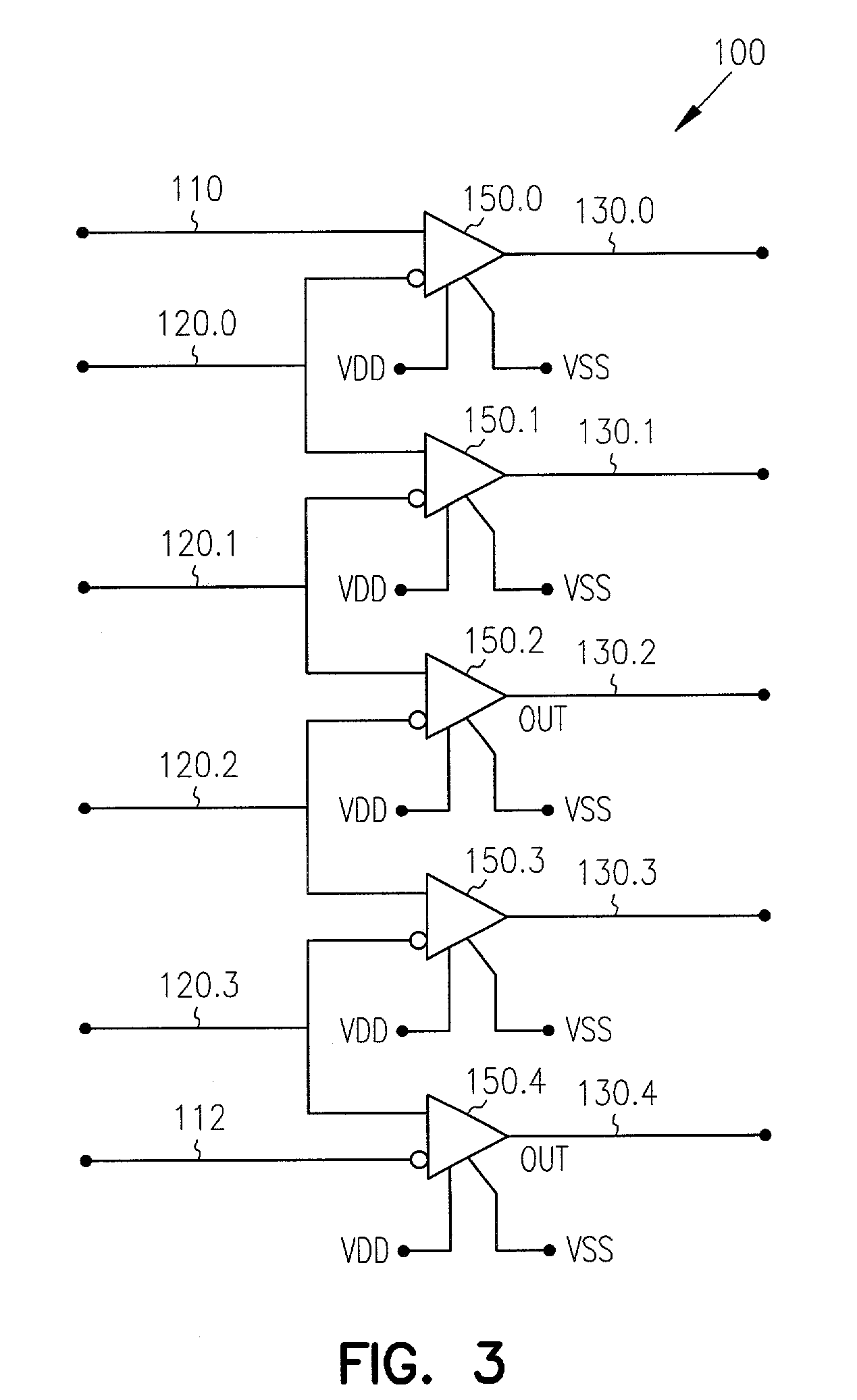Spacial derivative bus encoder and decoder
a derivative bus and encoder technology, applied in the field of electronic data transmission methods and apparatuses, can solve problems such as masking or exaggerating voltage level variations, affecting the accuracy of transmission errors, so as to reduce inter-symbol interference and reduce base line wander
- Summary
- Abstract
- Description
- Claims
- Application Information
AI Technical Summary
Benefits of technology
Problems solved by technology
Method used
Image
Examples
Embodiment Construction
[0019]In the following Detailed Description of the Preferred Embodiments, reference is made to the accompanying drawings which form a part hereof, and in which is shown by way of illustration specific embodiments in which the invention may be practiced. It is to be understood that other embodiments may be utilized and structural changes may be made without departing from the scope of the present invention.
[0020]FIG. 1 is a block diagram of the basic process involved in transmitting data across a network. Input data is transferred to transmitter 100 from where it is then transmitted over one or more signal lines 130.0–130.4 to receiver 200. Receiver 200 then transfers the data out. An accurate data transmission system outputs data from receiver 200 which matches that input into transmitter 100. In one embodiment of the present invention data verification is accomplished through encoding the input data at transmitter 100 and then transmitting the encoded data to receiver 200 where it ...
PUM
 Login to View More
Login to View More Abstract
Description
Claims
Application Information
 Login to View More
Login to View More - R&D
- Intellectual Property
- Life Sciences
- Materials
- Tech Scout
- Unparalleled Data Quality
- Higher Quality Content
- 60% Fewer Hallucinations
Browse by: Latest US Patents, China's latest patents, Technical Efficacy Thesaurus, Application Domain, Technology Topic, Popular Technical Reports.
© 2025 PatSnap. All rights reserved.Legal|Privacy policy|Modern Slavery Act Transparency Statement|Sitemap|About US| Contact US: help@patsnap.com



